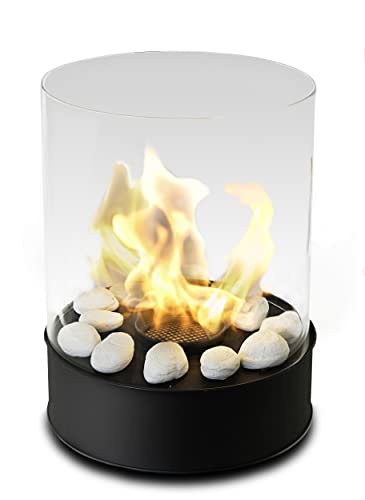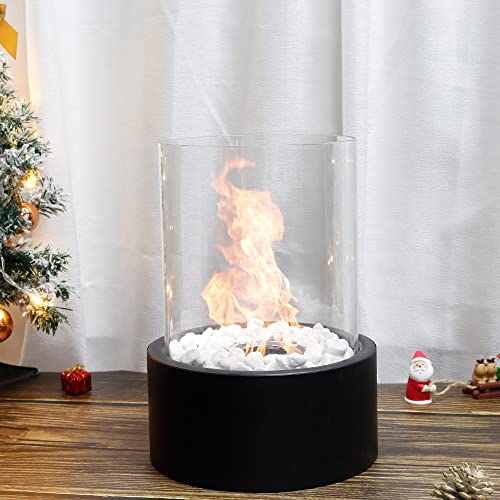bioethanol fuel fires Fireplaces - The Hottest Trend in the Fire Industry
 bioethanol Fireplace indoor
bioethanol Fireplace indoor fireplaces have become one of the most popular trends in the field of fire. These stylish free-standing fireplaces, as well as wall-mounted models are extremely adaptable. They are a great alternative to gas or wood fires.
They can be used in nearly every environment if utilized correctly. Follow the manufacturer's guidelines regarding minimum room sizes and keep the burner away from anything that is flammable.
Versatility
Bioethanol fireplaces can be set up anywhere in the home and are a great alternative to permanent installations such as wood or gas stoves. They can also be put outside in a garden or courtyard for an eye-catching design element that is secure and easy to use. This versatility lets you add a focal point to an area with minimal effort and without having to completely renovate a room.
They utilize a liquid fuel derived from waste products or plant by-products and burn more cleanly than traditional fires. They release fewer particles which can cause harm to the health of people who live in the area. Ethanol fires also produce fewer smoke and ash, which means that cleaning up after using them is much simpler.
The main component of a bioethanol fireplace is the burner, which houses the fuel and has an opening through which vapors can mix with oxygen to produce flames. Depending on the model, the burner can be operated either by hand or automatically. Some models have an safety feature that stops the burner from running low on fuel. A burner should never be placed near curtains or furniture that may catch fire due to heat.
A bioethanol fire can be positioned on a flat surface such as the floor or table or affixed to the wall for a more permanent installation. The flames created by the burner aren't as intense as those from a wood or gas burning fireplace, but they will provide ample warmth for the typical room. They are also ideal to create an attractive focal point in the corner of an area.
It is important to carefully follow the instructions provided in the user's guide when refilling your bioethanol fuel. It is important to use only approved fuel and keep the burner at least one meter from any other objects. It is crucial to regularly check the fuel containers and burners for signs of wear or damage. This will ensure that the fuel is safe to use.
Easy installation
A
bio ethanol fire place fireplace can be an ideal addition to any home. It's easy to install and gives a modern appearance. They are available in a variety of styles and sizes including wall-mounted or freestanding designs, and also see-through models. Think about the size of your home and the amount of heat you require when choosing the right fireplace for your needs. Verify the fireplace's certifications and safety features.
Most bioethanol fireplaces arrive fully assembled. All you have to do is select the area in your home where you want to install it and follow the directions in the manual for installation. Once you've completed the installation, you'll be able to enjoy your new fireplace.
The process of installation is dependent on the type of fireplace you own. For example, if you opt for a wall-mounted bioethanol fireplace you'll need to secure it to the wall with screws or plugs. If you opt for a built-in model it is necessary to make a recess in the wall that is big enough to hold the fire. In some instances, you will have to drill through plasterboard to install the fireplace.
It's time to decorate your bioethanol fireplace! There are a myriad of choices, ranging from tiles and paints to natural stone slabs and marble. Choose a fabric that is heat-resistant to stop the fire's heat from damaging the decoration.
Another aspect to think about when deciding on a bioethanol fireplace is price. Prices vary from a few hundred to several thousand dollars, so do your research before making a purchase. Read reviews and compare products to find the right one for you.
Although there are some potential risks associated with bioethanol fires however, they can be prevented with the proper care and maintenance. For instance, you shouldn't add fuel to the fire when it's burning or refill a fire that's recently been extinguished. It is also important to keep children and pets away from the flames. You can enjoy your fireplace with ethanol for many years by following these simple guidelines.
Maintenance is easy
Ethanol fireplaces can be a fantastic alternative to traditional log-burning fires. They offer a variety of advantages over other fireplaces, such as their ease of maintenance and installation. Ethanol fires are not required to have flues or chimneys, and they can be installed in rooms that do not have these facilities. They also do not produce the same type of emissions like wood-burning stoves, which can pollute indoor air.
Follow the manufacturer's guidelines to utilize a
bio-ethanol fires burner. Fill the reservoir of fuel to the maximum. Be sure to pour the fuel in a well-ventilated area, and keep the ethanol at a minimum of an arm's distance from the flame. Then, ignite the fuel with an extended lighter. The flames start out low, but within 10 to 15 minutes, they will reach their maximum height. You can add more fuel to extend the burning duration.
The flames will last up to 4-5 hours, based on the amount of oxygen fed to them. They can be extinguished by closing the lid and starving them of oxygen or by using a lighter to touch the flames and blow them out. After the flames have gone you can refill your ethanol fire and begin a new one.
While some people fret about the safety of bioethanol fireplaces, they are no more dangerous than other types of fireplaces. It is advised to read the user manual, and follow the instructions for ignition, fueling, and flame control. It is also recommended to clean the burner unit and fuel reservoir, and ensure that they are kept in a safe location.
It is essential to select a fireplace that is appropriate for your home. This will impact the way it is utilized. Consider the dimensions of your space and select a fireplace capable of heating the space adequately. You should also consider models that come with built-in safety features, such as automatic shut-off systems or flame sensors.
Safety
Ethanol fireplaces are extremely safe and do not emit any harmful substances such as smoke, ash, or carcinogenic gasses. They also do not emit carbon monoxide and they do not require an exhaust pipe, chimney or any other venting system. But, as with any other stove or fireplace they must be installed in a ventilated space.
You should also never place any combustible material near your
bio ethanal fire-fire or the fire itself, as they could trigger an accident. Keep the ethanol away from children as it can be an explosive liquid.
Another important point regarding safety is that you must follow the guidelines laid down by the manufacturer in relation to lighting, refueling and managing the fire. Refer to the owner's guide that is typically included with each model of bioethanol fireplace to ensure that you are following manufacturer's instructions.
In their manuals, a majority of manufacturers include a thorough section on safety, which will inform the user about the correct way to refuel bio-fires, the most efficient method to light and then extinguish the fire, the types of fuel that can be used, and the minimum ventilation requirements for each appliance. It is highly recommended to be sure to read these guidelines thoroughly.
In terms of the security of your ethanol fireplace, the latest developments in our range have allowed us to incorporate a unique 'no-spill' fuel box in all of our freestanding and woodburner biofires. This new feature absorbs the ethanol contained in the fuel box to limit the risk of spillage if the burner is knocked over or tilted.
Ethanol fireplaces are also constructed so that they operate in the "confined space" to stop the flames from spreading too far away from the appliance. This means that they can be used in rooms with smaller dimensions than a traditional fireplace but the fire must be placed at a sufficient distance from any combustible object. Please contact our team with any questions about the safety and effectiveness of a bio-ethanol fire. You can also go to our FAQs.




